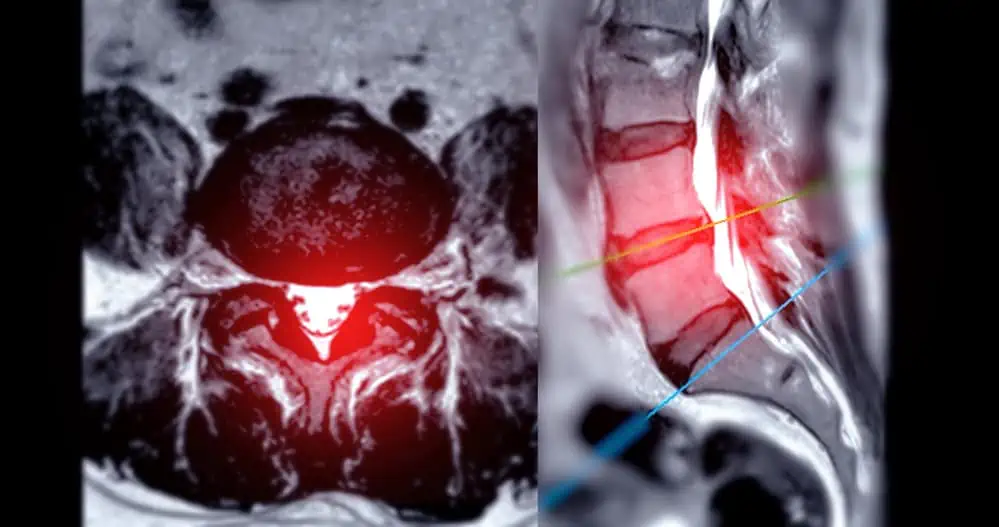Hyaluronan, a substance naturally found in the human body, plays an important role in maintaining joint health. Often likened to a lubricant, hyaluronan ensures that our joints are functioning smoothly by providing the necessary cushioning.
As we age or encounter joint-related conditions, the production of hyaluronan can diminish, potentially leading to increased joint pain. This discomfort often manifests as stiffness, swelling, or a diminished range of motion, all of which can significantly impact our daily lives.
Recognizing the potential of hyaluronan to alleviate joint pain, medical practitioners have explored its application as a treatment option. Injections of hyaluronan are commonly used for patients who haven’t found relief from other treatments for arthritis, particularly osteoarthritis of the knee.
These treatments, clinically reviewed and approved by the FDA, are intended to restore the natural balance within the joint, reduce pain, and improve function. However, for the safe and effective use of hyaluronan, it’s crucial to consider the potential side effects and weigh them against the benefits, as with any medical treatment.
Key Takeaways
- Hyaluronan is crucial for joint lubrication and can mitigate pain when naturally produced levels decline.
- FDA-approved hyaluronan injections are a potential treatment route for patients with joint pain not alleviated by other therapies.
- Users of hyaluronan must be informed of potential side effects and balance these risks against the benefits of treatment.

Understanding Hyaluronan and Joint Pain
Hyaluronan, a substance we naturally produce, plays a critical role in maintaining healthy joints. Here we explore its functions and connection to joint health.
Role of Hyaluronan in the Body
Hyaluronan, also known as hyaluronic acid, is a key component of our connective tissue. Present in substantial amounts within our synovial fluid, it serves as a lubricant to joints and is integral to the elasticity of cartilage.
A glycosaminoglycan, hyaluronan contributes to the viscosity of the synovial fluid, which helps in cushioning the joints and reducing wear and tear. Moreover, it assists in the transport of nutrients to and from the cells within these tissues.
Hyaluronan’s interaction with proteoglycans, another type of molecule within the connective tissue matrix, facilitates water retention and forms a gel-like substance, providing further resilience to tissues against compression.
Connections Between Hyaluronan and Joint Health
The correlation between hyaluronan and joint health is pronounced, especially in the realm of joint pain management. As we age or sustain injuries, the concentration of hyaluronan in the synovial fluid may decrease, leading to weakened joint function and discomfort.
Enhanced hyaluronan levels in the synovial fluid are often associated with improved joint flexibility and a reduction in pain, attributes essential particularly for those facing joint-related conditions.
Synthetic hyaluronan supplements or injections have been used to mimic the effects of natural hyaluronan found in the body. These treatments aim to restore adequate levels of hyaluronan and help maintain cartilage health, ensuring efficient joint function and providing relief from pain.
Causes and Symptoms of Joint Pain
Joint pain can significantly affect our daily activities, often stemming from various forms of arthritis. Identifying the causes and recognizing the symptoms are crucial steps before considering treatments like hyaluronan.
Common Types of Arthritis
Arthritis, a leading cause of joint pain, generally falls into two main categories: osteoarthritis and rheumatoid arthritis.
Osteoarthritis is the most common form and results from the wear and tear of joint cartilage. It primarily affects our knees, hips, and hands, leading to pain and stiffness. In contrast, rheumatoid arthritis is an autoimmune disorder causing synovial inflammation, which provokes pain and swelling in the joints.
- Osteoarthritis: Wearing down of cartilage, age-related stiffness, chronic knee and hand pain.
- Rheumatoid arthritis: Immune system attacks the joints, resulting in inflammation, pain, and swelling.

Symptoms Leading to the Use of Hyaluronan
When suffering from joint pain, we often observe symptoms that may lead us to consider treatments like hyaluronan. These symptoms include persistent stiffness, swelling in the joints, knee pain during movement, and a feeling of inflammation when performing everyday tasks.
In cases where these symptoms become debilitating, hyaluronan, a substance our bodies naturally produce for joint lubrication, can be administered to alleviate discomfort.
- Stiffness: Especially in the morning or after periods of inactivity.
- Swelling: Visible inflammation around joint areas.
- Knee Pain: Localized discomfort that can escalate upon walking or bending.
Hyaluronan Treatments for Joint Pain
In our focus on hyaluronan treatments for joint pain, we will explore its use in viscosupplementation as well as the various types of hyaluronic acid products available. These treatments are particularly relevant for managing symptoms of knee osteoarthritis.
Viscosupplementation with Hyaluronic Acid
Viscosupplementation is a treatment that involves the injection of hyaluronic acid directly into the joints, primarily the knees. This procedure aims to restore the lubricating properties of the synovial fluid, thereby reducing pain and improving joint movement.
For example, injections like Synvisc, Orthovisc and their high-strength versions like Synvisc-One and Gel-One are designed to mimic the natural hyaluronic acid in our joints.
While many patients have experienced pain relief with viscosupplementation, it’s important to consider that responses can vary and some individuals may not benefit.
Common Side Effects:
- Pain at the injection site
- Swelling
- Stiffness
- Temporary fluid accumulation
Types of Hyaluronic Acid Products
Several forms of hyaluronic acid (HA) products are utilized for joint pain treatment, ranging from injections to oral supplements.
Injections, such as Hyalgan, Monovisc, Euflexxa, Supartz, and Supartz FX, contain variations of hyaluronic acid like sodium hyaluronate or hylan G-F 20, each designed to suit different needs and severities of joint pain.
HA Supplements fall into a different category; these are taken orally and claim to support joint health, though the body’s absorption and use of HA from these products may vary.
When considering HA treatments, it’s imperative to consult with healthcare providers to choose the most suitable option and understand the potential for side effects or interactions with other medications you may be taking.

Clinical Evidence and FDA Approval
In our exploration of hyaluronan as a treatment for joint pain, specifically osteoarthritis, we find compelling clinical evidence supporting its efficacy and safety, which has led to FDA approval for certain types of hyaluronan formulations.
Efficacy Studies and Pain Scores
Clinical trials have consistently evaluated the effectiveness of intra-articular hyaluronic acid injections on pain relief in osteoarthritis patients.
For instance, a review on oral hyaluronan cites numerous randomized, double-blind, placebo-controlled trials that indicate hyaluronic acid’s capability to alleviate knee pain. These studies measure patient pain scores before and after treatment, using scales such as the Western Ontario and McMaster Universities Arthritis Index (WOMAC) to assess the degree of pain relief.
- Pain Score Assessment:
- Pre-treatment: High WOMAC scores indicating severe pain
- Post-treatment: Lower WOMAC scores suggesting reduced pain
Safety Profiles and FDA Considerations
When evaluating treatments, the FDA weighs benefits against potential risks such as infection or adverse reactions.
Current literature, including a comprehensive review of viscosupplementation, suggests that hyaluronic acid injections have a favorable safety profile.
This is corroborated by the fact that the FDA has approved treatments like the single-injection hyaluronic acid gel and extended-release formulations for managing osteoarthritic knee pain, as detailed in a JAMA article.
- FDA Safety Considerations:
- Approved Formulations: E.g., Durolane, Zilretta
- Monitoring Adverse Events: Rare instances of infection or pain at the injection site
Managing Side Effects and Risks
When considering hyaluronan injections for managing knee osteoarthritis or rheumatoid arthritis, we must be aware of and know how to manage potential side effects and risks. Our careful attention to these aspects can help ensure the safety and effectiveness of the treatment.
Common Side Effects of Hyaluronan Injections
Side effects associated with hyaluronan injections can vary from mild to moderate and usually subside on their own.
- Joint pain or discomfort: After the injection, some individuals may experience pain or discomfort in the knee, typically temporary.
- Redness and swelling: The injection site might show signs of redness or swelling, indicating a localized reaction.
- Itching or bruising: Itching around the area or bruising can occur due to the needle insertion.
To manage these side effects, we recommend applying ice packs to the affected area to reduce inflammation and using over-the-counter pain relievers, if advised by a healthcare provider.
Ensuring proper technique and post-injection care is also crucial. If side effects persist, consulting a healthcare professional is important for an appropriate response.
Severe Allergic Reactions and Infections
Although less common, hyaluronan injections can lead to more severe complications such as:
Allergic Reactions:
- Signs of a serious allergic reaction may include rash, hives, or breathing difficulties.
- If any indications of an allergic response occur, it’s essential to seek immediate medical attention.
Infections:
- An infection at the injection site can manifest through increased pain, fever, or unusual discharge.
- In the event of suspected infection, one must contact a healthcare provider promptly to prevent complications.
Patients with known allergies should inform their doctors beforehand, as certain hyaluronan products may contain bacterial proteins which could cause reactions. Using aseptic techniques for injections and monitoring for adverse reactions can help mitigate these risks.
Alternative and Supportive Therapies
In addition to hyaluronic acid treatments, we can explore alternative and supportive therapies that may help manage joint pain effectively.
These encompass both active approaches like physical therapy and exercise, and passive modalities including various medications and supplements.
We’ll discuss how these can be integrated to support joint health specifically in the hip and other affected areas.

Physical Therapy and Exercise
Engaging in physical therapy often plays a pivotal role in managing hip and joint pain.
With a tailored exercise program, we can strengthen the surrounding muscles, improve flexibility, and promote joint stability.
Exercise can range from aerobic activities to specific strength training regimens, which not only enhance physical function but also have an anti-inflammatory effect that aids in pain reduction.
Supplemental Medications and Over-the-Counter Options
When it comes to medications, we have several over-the-counter options at our disposal.
Drugs like acetaminophen can be effective for pain management, while non-steroidal anti-inflammatory drugs (NSAIDs) can help reduce inflammation.
For those with more severe pain, prescription medications such as corticosteroids may be considered. However, it’s crucial to balance the benefits with potential risks and side effects.
Practical Considerations for Hyaluronan Use
Before exploring the practical aspects of using hyaluronan for joint pain, it’s important for us to consider two pivotal factors: the economic implications involving cost and insurance coverage, and adhering to the established treatment protocols as advised by healthcare professionals.
Cost and Insurance Coverage
Cost:
- The cost of hyaluronan treatments can vary widely depending on the brand and the treatment regimen.
- It’s important to note that insurance companies may not always cover hyaluronan injections.
Insurance Coverage:
- Coverage for hyaluronan therapy is subject to the policies of individual insurance providers.
- Prior authorization may be required; thus, consultation with the healthcare provider is essential to understand coverage options.
Treatment Protocols and Healthcare Professional Guidance
Healthcare Professional Guidance:
- Patients should seek guidance from a qualified healthcare provider to determine if hyaluronan treatments are appropriate for their specific condition.
- A qualified healthcare provider should administer hyaluronan treatments according to clinical practice standards to ensure safety and efficacy.
Treatment Protocols:
- Comprehensive treatment protocols include an assessment of the knee or affected joint, analysis of the synovial fluid, and an evaluation of the chondrocyte health.
- Protocols may involve a series of injections administered over specific intervals as determined by the healthcare provider.
Frequently Asked questions
- What are hyaluronan injections, and how do they work?
- Answer: Hyaluronan injections, also known as viscosupplementation, involve injecting hyaluronic acid into the joint to improve lubrication and reduce pain by supplementing the naturally occurring hyaluronic acid in the joint.
- Who is a suitable candidate for hyaluronan injections?
- Answer: Suitable candidates include individuals with mild to moderate osteoarthritis who have not responded to other treatments like pain medications or physical therapy and want to delay surgery.
- What can I expect during and after the procedure?
- Answer: The procedure is quick, done in a doctor’s office, with potential mild pain or swelling afterward. Patients should avoid strenuous activities for 48 hours post-injection.
- How effective are hyaluronan injections for joint pain relief?
- Answer: Effectiveness varies; some experience significant relief lasting up to six months, while others see less improvement. It can reduce pain and improve mobility, particularly in the knee.
- Are there any risks or side effects?
- Answer: Common side effects include temporary pain and swelling at the injection site. Rare risks include allergic reactions and infections. Discuss your medical history with your doctor beforehand.
These injections offer a non-surgical option for managing joint pain in osteoarthritis patients. Always consult a healthcare professional for personalized advice.












